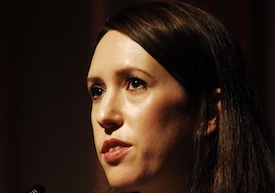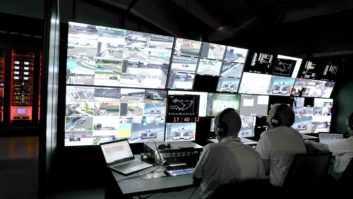
There’s no-one more suitable or capable to keynote the inaugural 3D Masters event than Chris Johns, chief engineer at BSkyB and the architect of its pioneering move into 3DTV – or plano-stereoscopic broadcasting as Johns termed it.
Plano-stereoscopic television delivers two views – such as the left and right method favoured by BSkyB – with special glasses and is widely considered the first generation of stereo 3DTV formats.
Johns has been a valued contributor to the success of HD Masters since 2006. Referring to this he said it was a privilege to be part of the Masters team and suggested that the technology changes since 2006 were not as great as some people think.
“It’s the same innovation moving us forward,” he stated. “HD was an evolution in resolution and 3D is another leap in audio visual experience but HD actually required a far greater wholesale change in infrastructure from SD than the need to re-equip from HD to 3D.”
Sky Sports has been broadcasting 3D English Premiership matches since April but Johns said it took them five months of solid testing before they were happy with they could achieve a consistent quality.
“Practice, practice, practice,” was his main advice to the audience. “And keep it simple. We’ve published a detailed specification sheet and there are certain rules which, if people stick to them, will deliver a unique and pleasurable 3D experience.
“Think about the storyline and how will it work in 3D. Does it tell your story in a more interesting manner? You can’t just stick 3D onto a 2D story. Sky is eager to embrace good content and to close the content gap which currently exists.”
The broadcaster has pledged to fund the uplift in cost for HD productions but insists that 3D is not much more expensive once an initial investment in kit and training is made. “Maximise your margins,” Johns urged. “You can shoot 3D for a small increment of 10-20%.”
Referring to the concerns of Fox Sports chief executive David Hill, who declared at IBC09 that ‘if you’re not making money with HD how do you expect to make money with 3D?’, Johns admitted that European broadcasters had a different business model.
“We’ve put 3D screens into more than 1000 pubs where we can get 3D to a large number of people and we’ve started to see a revenue stream come out of that.”
In a survey of viewers to Sky’s 3D pub viewing experience, 70% of people gave 3D an 8 out of 10 that signalled to Sky that its production threshold and business model is working. It anticipated 1 million household 3D displays in the UK by 2011
To capitalise on that, from the autumn Sky will increase the content of its appointment to view Sky 3D service from the current two live Premiership football matches a month with additional entertainment, live event and documentary programming.
“As with the early days of HD the quantity of content is still too scarce to broadcast 24 hours of 3D. We’re not charging extra for 3D subs at this stage. If you’re a top tier customer you’ll get 3D automatically.”
One of Sky’s more controversial specs for 3D is its uncompromising policy on dimensionalisation. While Avatar was made with minimal conversion the equally large box office impact of features like Alice in Wonderland and Clash of the Titans, both of which were shot in 2D and converted in post, has Johns admitted, caused a dilemma.
“Should we encourage or discourage it?” he posed rhetorically. “Sky is quite clear: we don’t encourage conversion.”
But there’s an important caveat. Provided there is correct editorial sitting behind the conversion – with decisions taken scene by scene by trained editors who exhibit an understanding of how to achieve correct depth – then Sky will accept converted product on a case by case basis.
“Don’t just put a 3D layer on top of a 2D show with a magic box and expect to generate good quality,” he says. “Conversion can be done – if it’s controlled properly.”
Anything less than perfection with 3D means the format won’t take off. Stick to the guidelines and rules that have put in place and learn from the experts. “These are guidelines not definitive rules – you can go outside of them but only if you know what you are doing. Convert with care, manage your product as it moves into the market and give the viewer an experience to remember.”
– Adrian Pennington






